Dr. Cătălin Stoean
Diploma Theses

Themes for diploma theses coordination
- Interfaces for Computational Intelligence Algorithms
- Genetic Programming. Applications
- Searching for Solutions in Unknown Environments
- Cryptarithmetic Puzzle Solver
- Automated Bot Navigation
- Adaptation in Stochastic Environments
- River Crossing Puzzle Solver
- Reinforcement Learning. Applications
- Self-Adaptive Agents to a Changing Environment
Themes for master theses coordination
- Attribute Importance in Classification Problems
- Supervised Learning
- Data Analysis Methods
Selected Diploma Projects from Previous Promotions (authors chronological, then alfabetical order)
| 2012 Promotion | |
| Project Title: | Rutare folosind algoritmul A* |
| Author: |
Bogdan Albulescu Contact: albulescu_bogdan23@yahoo.com |
| Project Description | The application contains a short menu from which the user can select the start and finish positions
and obstacle (wall) with which the user can draw the grid, also the user can select the searching speed
and the speed for drawing the solution. We can select the StepbyStep option, using the "1" key to advance, in order to observe step by step the way in which the algorithm generates a solution.
In order to deduce the way the algorithm works we select the SetCellSize=2 and also the D(details) button; each value from the grid is explained in the I(information) section.
The program was created using C++ and DarkGDK functions for the graphics.
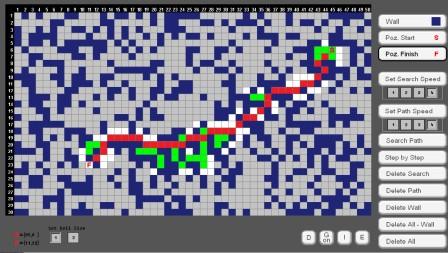 Application Source code |
| 2011 Promotion | |
| Project Title: | Automated Change of Gears |
| Author: |
Alexandru Becheru Contact: becheru@gmail.com |
| Project Description | This program is about trying to develop technologies based on artificial intelligence
for the automotive world. Although itís a fresh start, I already got good results in improving
the time that a car spends on a circuit. I developed a software that together with TORCS (The best Open Car Race Simulator) and artificial intelligence algorithms like "Hill climbing" and "Simulated annealing" improves the performance on the car gear box. Basically, I run a lot of race simulations with different rpm values for each gear, values which are found by the artificial intelligence algorithms and then sent to the simulator. As the number of simulations increases, the time spent on the circuit should be smaller and smaller. I can't give you specific numbers for all the circuits because the results depend on a variety of factors, like the complexity of the circuit or the number of cars running against yours. What I can tell is that for some circuits the results are even better improved then by 30%. I encourage you to use the torcsAutomator and, see for yourself the results and even help in its development. 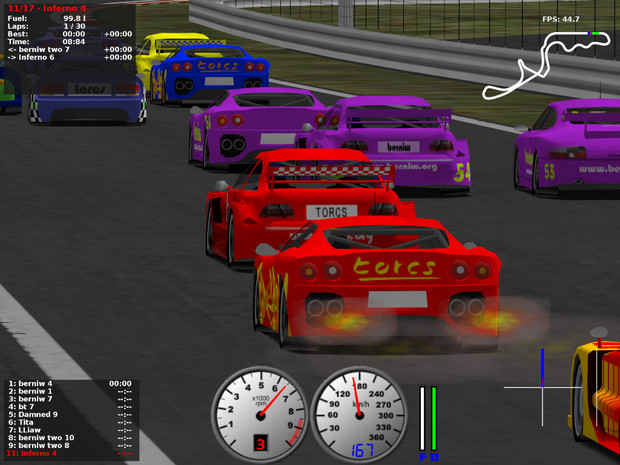 Download application & instructions |
| 2010 Promotion | |
| Project Title: | Intelligent Queens |
| Author: |
Radu Daniel Contact: rdon_don@yahoo.com |
| Project Description | This report details the development of a program that plays English draughts game. The
aim of this project was to design and implement a program that could play draughts at a smart
level, able to defeat most human players. This required an understanding of the draughts game
and it also required knowledge of the principles of game theory and programming skills
necessary to implement the program. The report discusses key aspects of the program, including design decisions, optimization used to improve performance, testing and implementation that was used to assess how well the program can play against humans. The algorithm behind is Minimax. 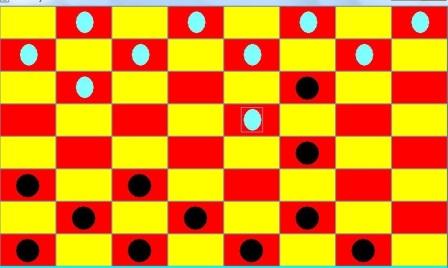 Download |
| Project Title: | Using Influence Map for Controlling an Agent
|
| Author: |
Dragos Nicolescu
Contact: nico_dragos2004@yahoo.com |
| Project Description | This project deals with implementing a controller based on the Influence Map model. The
controller is based on the idea that every object with which the agent can interact has a certain
influence (positive or negative) on him. The sum of these influences represents the Influence Map
which helps the agent find the best next move. The testing environment used in this project is the
Pac-Man game (http://en.wikipedia.org/wiki/Pac-Man). (http://en.wikipedia.org/wiki/Pac-Man).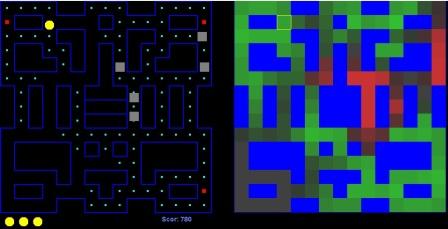 View applet online Related publication |
| Project Title: | Ant Colony in Artificial Intelligence |
| Author: | Laurentiu Petrescu
Contact: petrescu.laur@gmail.com |
| Project Description | The program simulates the learning of the minimal path in a grid
between the ant's home and the virtual food source for artificial ants.
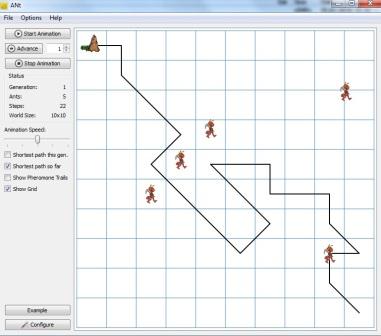
Exe Source |
| Project Title: | Strategies for X & 0 |
| Author: | Catalin Roman Contact: catalin_r8@yahoo.com |
| Project Description | Tic-tac-toe one of the oldest games. Over time, this game was known under various names and forms. An important tool for teaching the concept of "game theory".
This application tries somewhat to highlight the difference between the two types of artificial intelligence common in computer science: strong artificial intelligence and weak artificial intelligence(usually based on a set of rules).
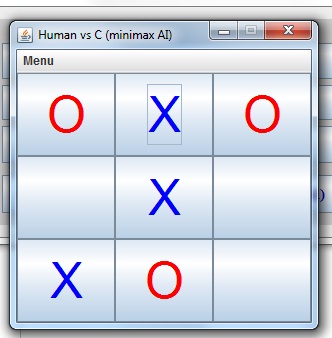 Download .jar |
| Titlul proiectului: | Artificial Immune Systems - Pattern Recognition |
| Author: | Marian Stanescu Contact: stanescu_mrn@yahoo.com |
| Project Description | The application made possible the recognition of a set of 10 pictures that are read and
converted into binary vectors. An artificial immune system algorithm for pattern recognition
aims to transform antibodies (randomly generated binary vectors that will come to recognize
the binary vectors of the pictures read at the entry). They are passed through several processes
specific to evolutionary computation (i.e. mutation, cloning, etc.). to get to recognize
antigens (original pictures).
The application takes place within several generations (cycles) and successfully realizes the recognition of 10 pictures, each with a size of 120 pixels. The evolutionary process of recognition is shown from 10 to 10 generations. 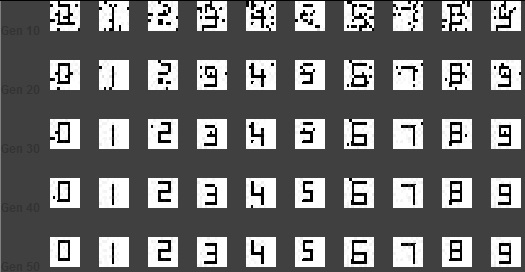 Download |